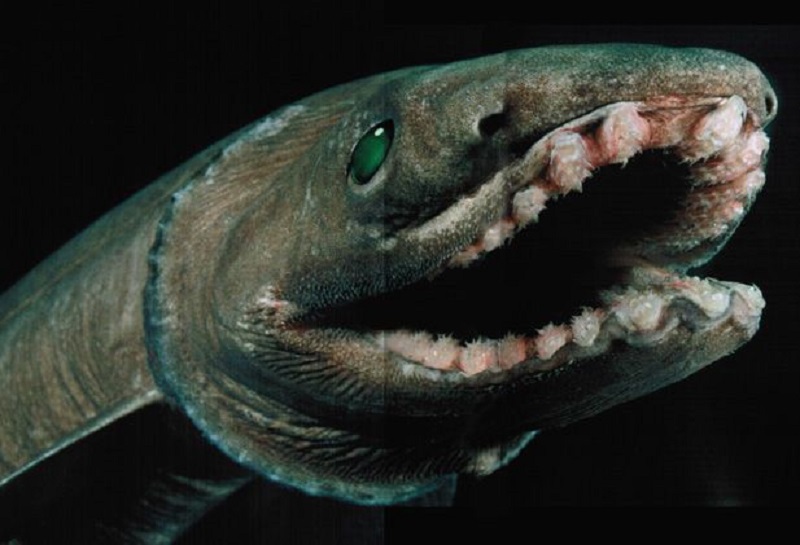
1. Frilled sharks
Scientific name: Chlamydoselachus anguineus.
Because of its primitive-looking characteristics, this weird shark is often referred to as a “living fossil.” Seldom seen by humans, the species lurks deep in the Atlantic and Pacific oceans at depths between 120 and 1580 meters.
Bonus creepy fact: the jaws of the frilled shark are filled with 25 rows of backward-facing, trident-shaped teeth. If your math is good, you know that adds up to 300 razor-sharp teeth in total.
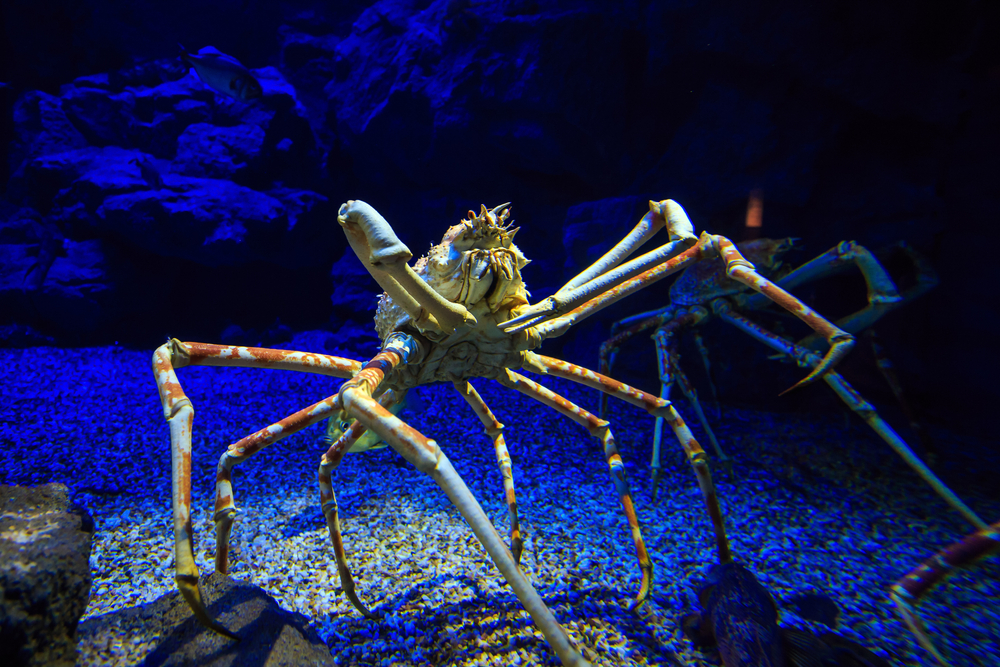
2. Japanese spider crab
Scientific name: Macrocheira kaempferi.
If you thought the spiders were bad enough, look at this grotesque-looking species of marine crab. They have the largest leg span of any invertebrate animal, with a spine-tingling length of up to 5.5 meters from claw to claw, and can weigh up to 19 kg.
Bonus creepy fact: Spider crabs can survive with up to three legs missing and can grow their lost legs back during consecutive malts.
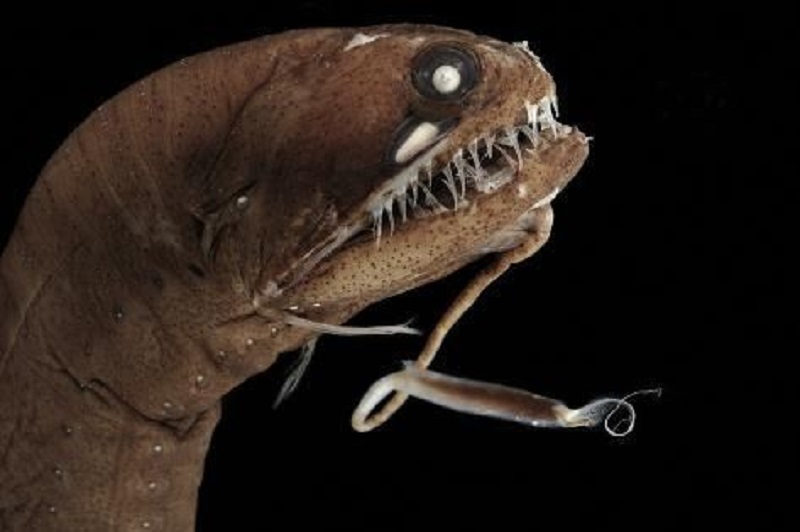
3. Deep-sea dragonfish
Scientific name: Grammatostomias flagellibarba.
Deep down in the Atlantic Ocean, up to 5,000 meters deep, this fierce predator is lurking. The conditions down here are harsh–there is no sun, no plant life, and the environment is still completely untouched by storms or ocean currents. In order to cope with this, dragonfish uses light-producing organs called photophores to attract prey into its fang-toothed jaws.
Bonus creepy fact: a distinctive feature of this species is the absence of some vertebras in its spine. This allows the dragonfish to have a more flexible head, enabling them to feast on larger prey.
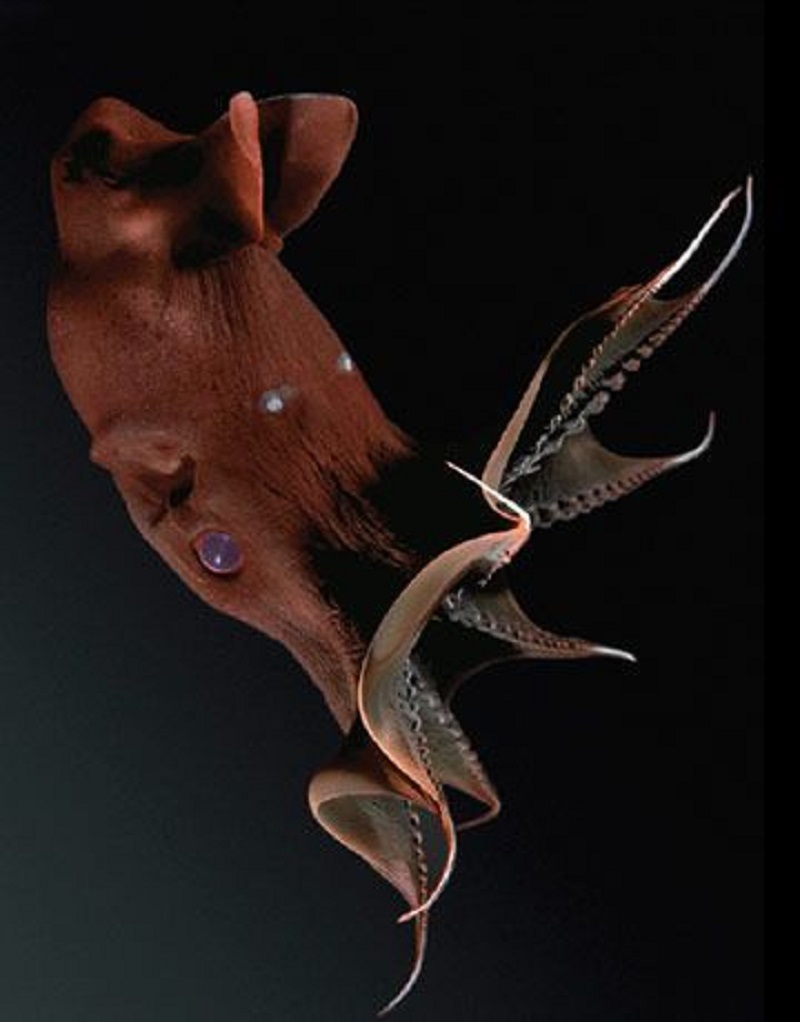
4. Vampire squid
Scientific name: Vampyroteuthis infernalis.
Too little is known about this elusive, scarlet-bodied creature that is believed to live at a depth of up to 900 meters. Here oxygen saturation may be as low as 3%, but in such suffocating environments, the vampire squid is easily able to thrive.
Bonus creepy fact: the reddish coloring of this squid is not the only justification for its spooky name. If you take a closer look, you will find that its eight arms, each filled with rows of fleshy spines, are bound by a cloak-like webbing of the skin.
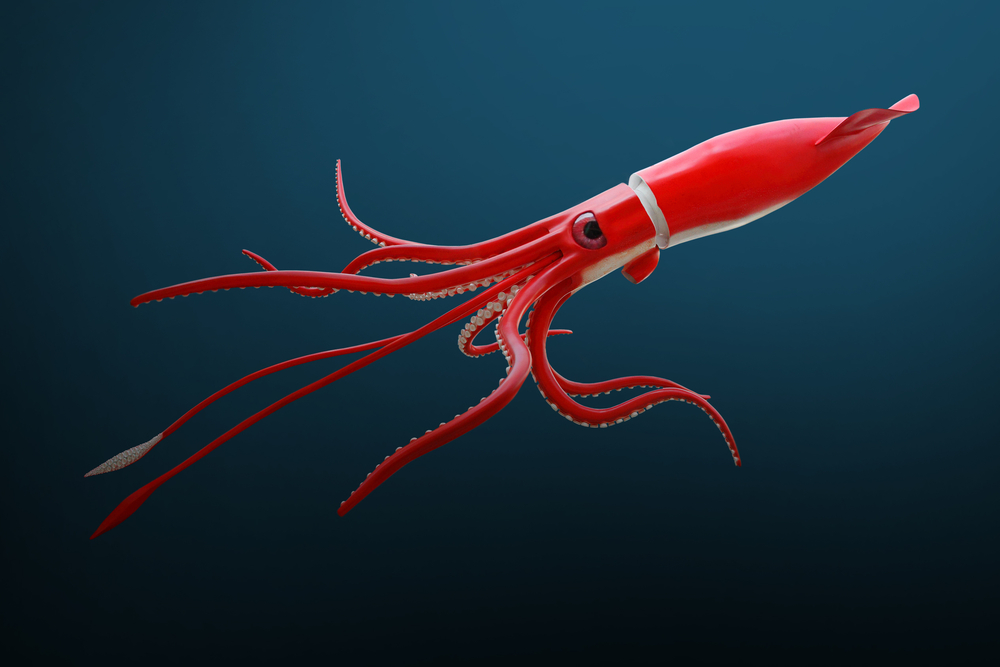
5. Colossal squid
Scientific name: Mesonychoteuthis hamiltoni.
Did you think the colossal squid was a made-up legend? Think again, as this marine creature is not just a bedtime story. The latest estimates put its maximum size at 12-14 meters with a possible weight of up to 750 kg. The massive species also has the largest eyes known in the animal world, with scientists measuring 30-40 cm (12-16 inches ) in diameter.
Bonus creepy fact: have you ever seen images of sperm whales with scars on their backs? Ok, those scars are assumed to have been caused by hook-like tentacles of a colossal squid.
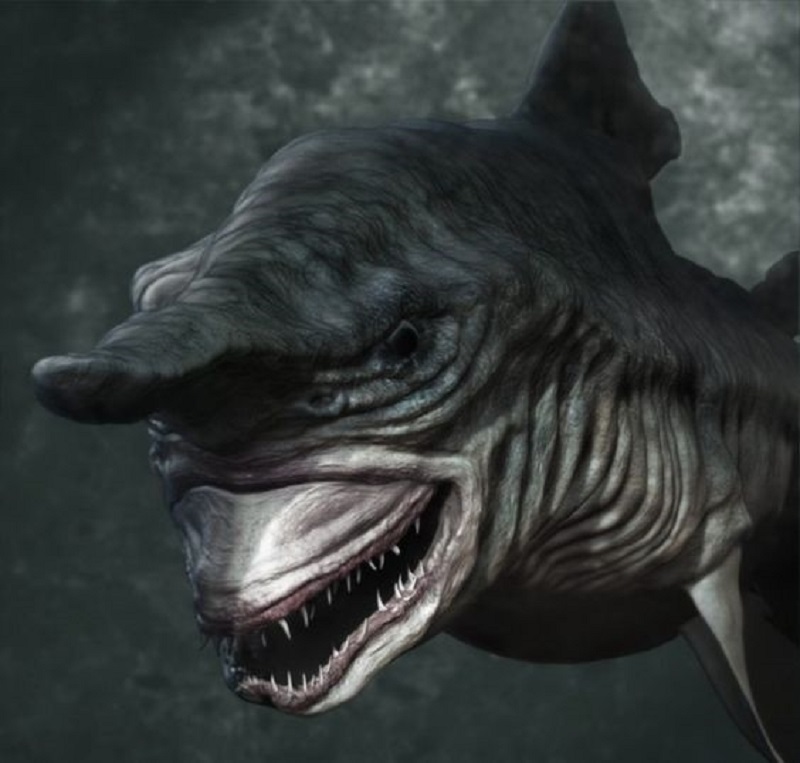
6. Goblin shark
Scientific name: Mitsukurina owstoni.
This goblin shark is another prehistoric-looking creature from the sea. Sporting an elongated snout and needle-like teeth, the most intimidating thing about this deep-sea dweller is its highly extensible jaws. They can immediately snap forward to capture the prey.
Bonus creepy fact: the skin of the goblin shark is semi-transparent so that the pinkish color you see is really a clear glimpse at their insides.
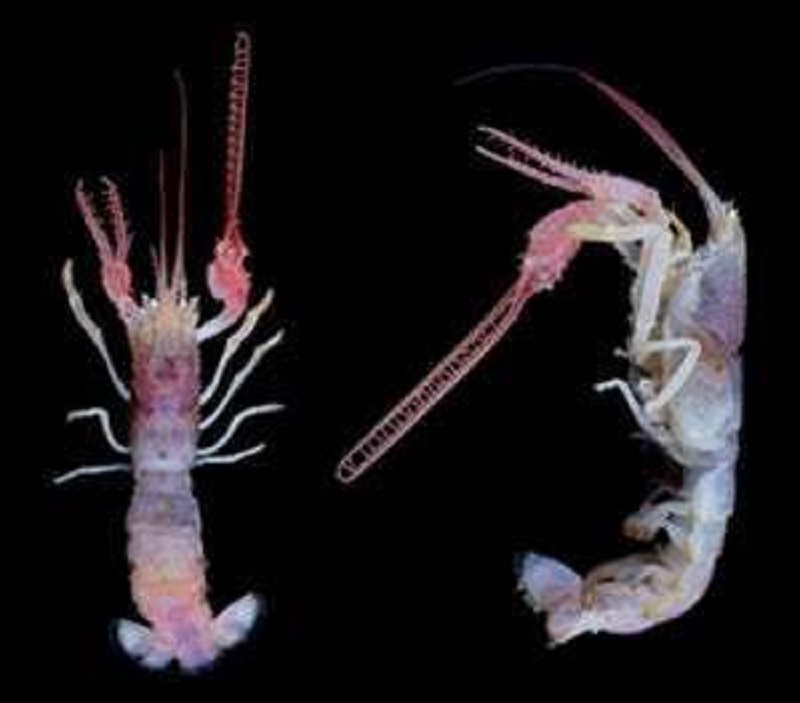
7. Terrible-claw lobster
Scientific name: Dinochelus ausubeli.
Found in the seas of the Philippines is this appropriately named lobster with two very horrible-looking claws. They ‘re also incredibly small, about 31 millimeters long.
Bonus creepy fact: these lobsters aren’t just tiny, but they’re blind too, which means they ‘re probably going to take a good stab at anything that’s too close to them.
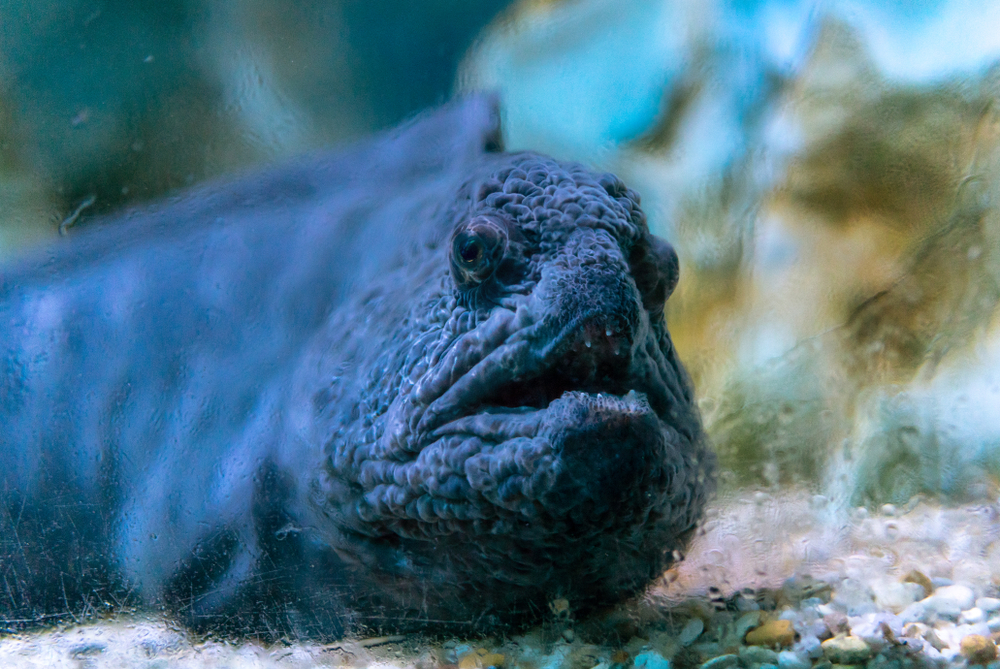
8. Atlantic wolffish
Scientific name: Anarhichas lupus.
It’s evident where this bottom-dwelling wolffish gets its name from. Armed with four to six fang-like teeth on its jaws, there are three more rows of crushing teeth behind it. And if this isn’t enough to make you nervous, the Wolffish’s throat is also scattered with serrated teeth.
Bonus creepy fact: Not shown is the wolffish’s long, eel-like body that can reach a length of upwards of 1.5 m.
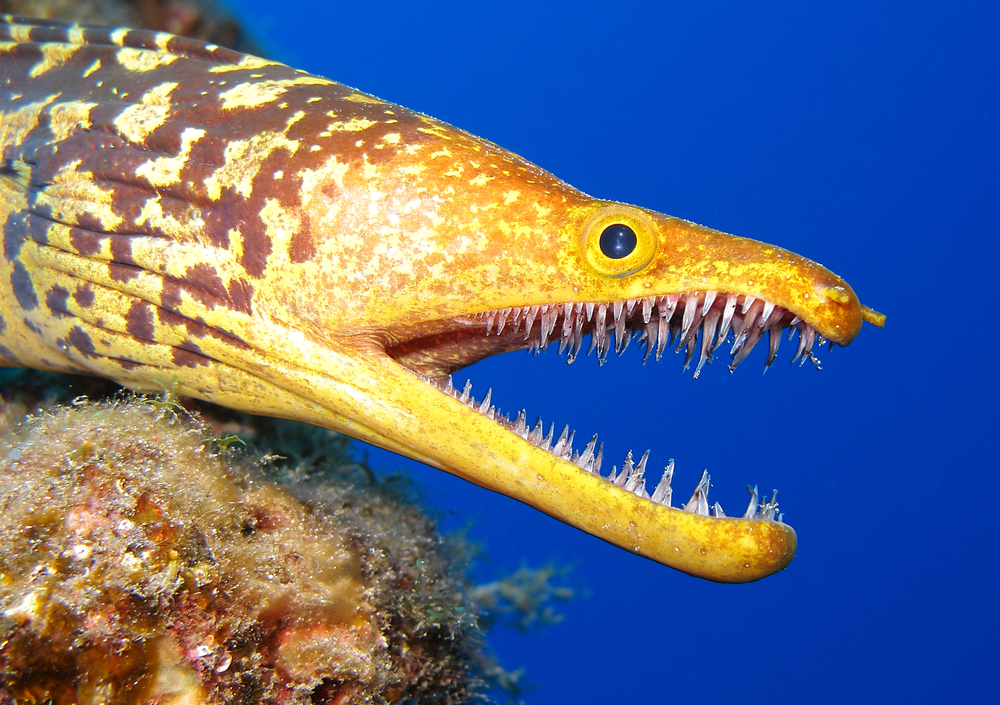
9. Fangtooth fish
Scientific name: Anoplogaster cornuta.
This dangerous species is one of the deepest-living fish ever identified. It has been reported as low as 5,000 meters below sea level, where the pressure is 500 times higher than that of land.
Bonus creepy fact: the fangtooth has another title to its name: the largest teeth of any marine species, relative to the size of its body. In fact, they are so ridiculously large that the fangtooth is unable to close its mouth completely.
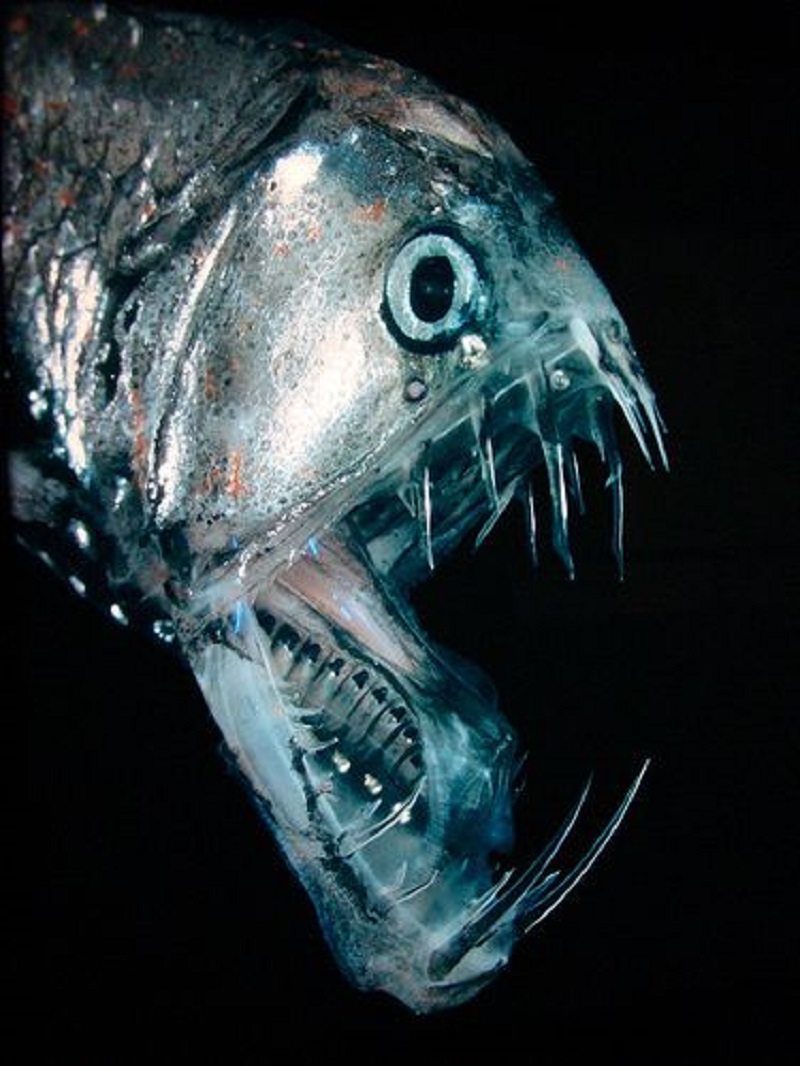
10. Pacific viperfish
Scientific name: Chauliodus macouni.
The deep-sea dweller is the greatest predator. Using photophores located across its dorsal spine, the viperfish lures accidental prey before capturing them in its long, needle-like fangs. Definitely not a creature you ‘re supposed to mess around with.
Bonus creepy fact: similar to the fangtooth, the big fangs of the viperfish can’t fit inside their ‘mouths. If anything, they curl back to the outside, resulting in an even more terrifying appearance.
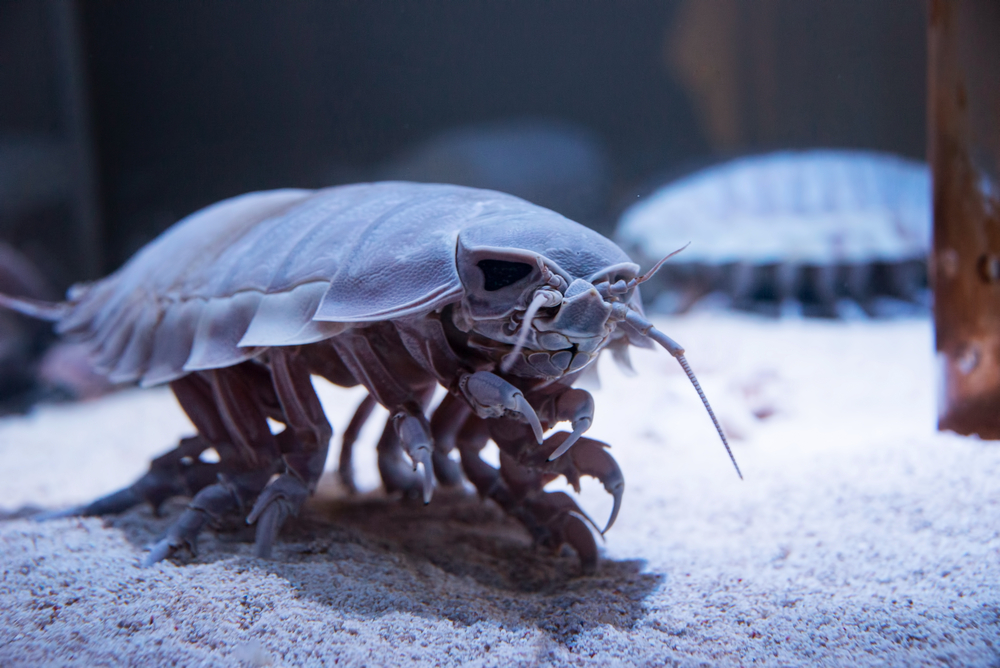
11. Giant isopod
Scientific name: Bathynomus.
Giant isopods are spooky-looking crustaceans that may come from an Alien movie. They are generally scavengers, but they have been known to use their four sets of jaws to feed on live prey. Oh, and they also have seven pairs of legs.
Bonus creepy fact: Although the largest species is between 19-36 centimeters in length, there have been isopod spottings of 76 centimeters in length.
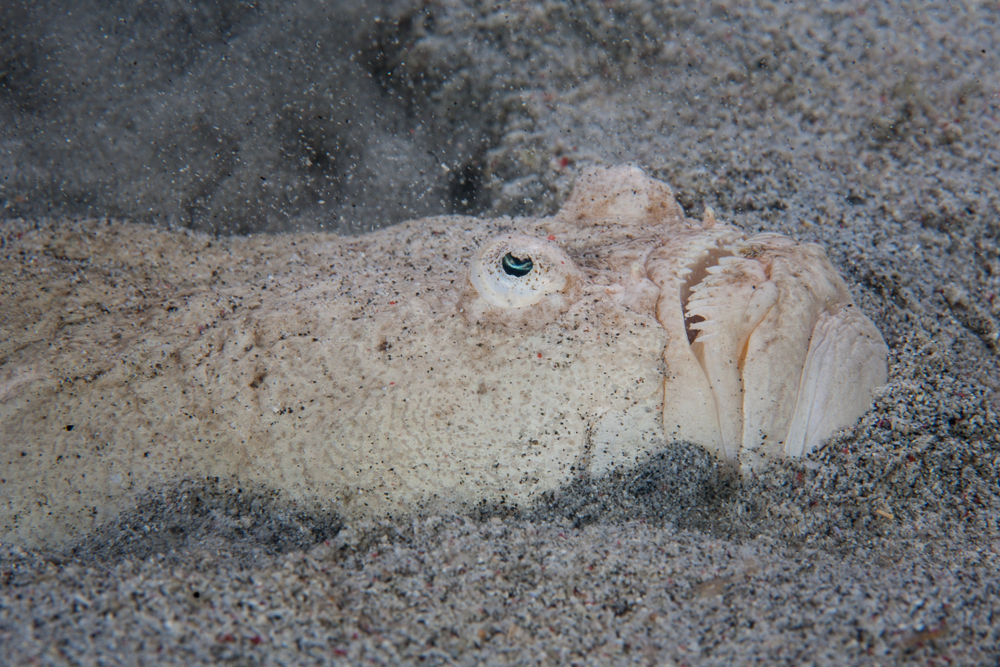
12. Stargazer
Scientific name: Uranoscopidae.
This creature looks relatively docile compared to the other sea creatures on this list. Don’t be fooled, however, by its looks. The standard method of attack of the stargazer is by camouflaging in the sand of the ocean, before using its gigantic mouth to suck in unsuspecting prey. To finish the job, this tricky fish has two venomous spines.
Bonus creepy fact: some species of stargazer fish can cause electrical shocks through a special organ located behind the eye.
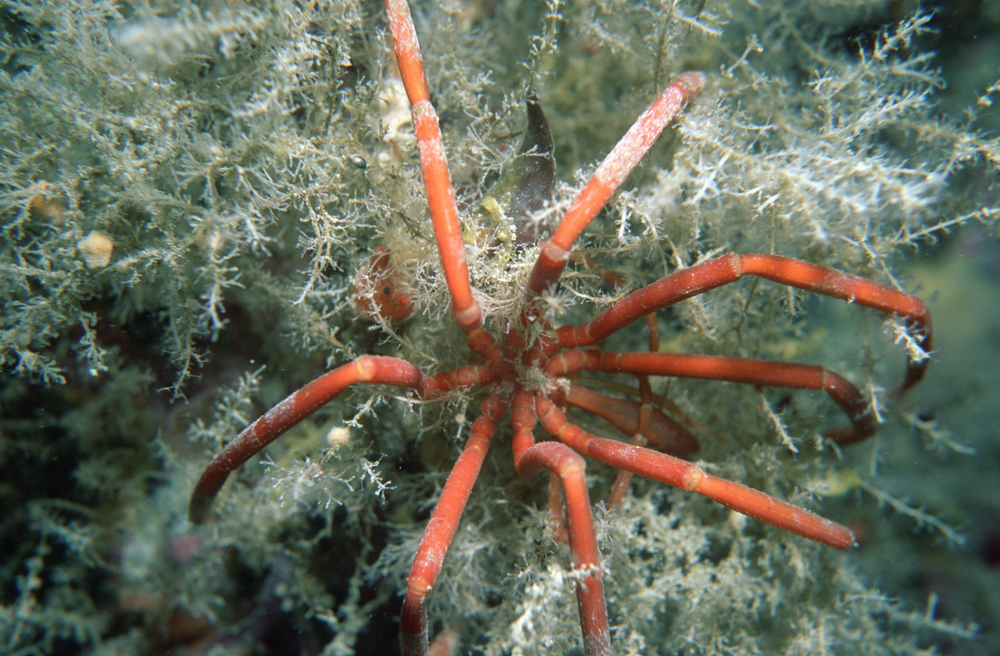
13. Sea spider
Scientific name: Pycnogonida.
There are more than 1,300 recognized species of sea spiders lurking in shallows and waters as deep as 7,000 meters. And if that doesn’t make you anxious, their leg span can range from a tiny one millimeter to over 25 centimeters.
Bonus creepy fact: the proboscis of the sea spider makes it possible to suck…out of its prey.
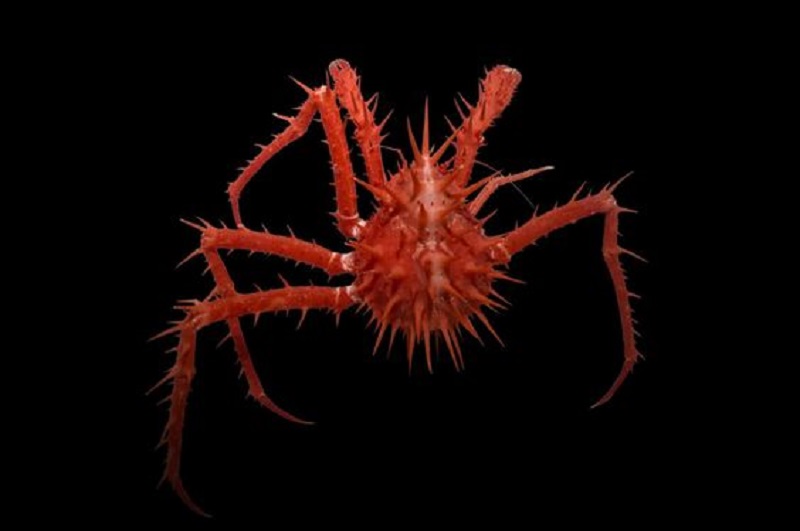
14. Spiny red crab
Scientific name: Lithodes maia
These spiny red crabs prowl the ocean floor at depths of up to 2,400 meters. Their quick movements, clutching claws, and armored body make it easy for them to capture, cut, and feast on fresh prey.
Bonus creepy fact: this species is directly associated to the hermit crab, with the shell being traded for some gnarly spikes.
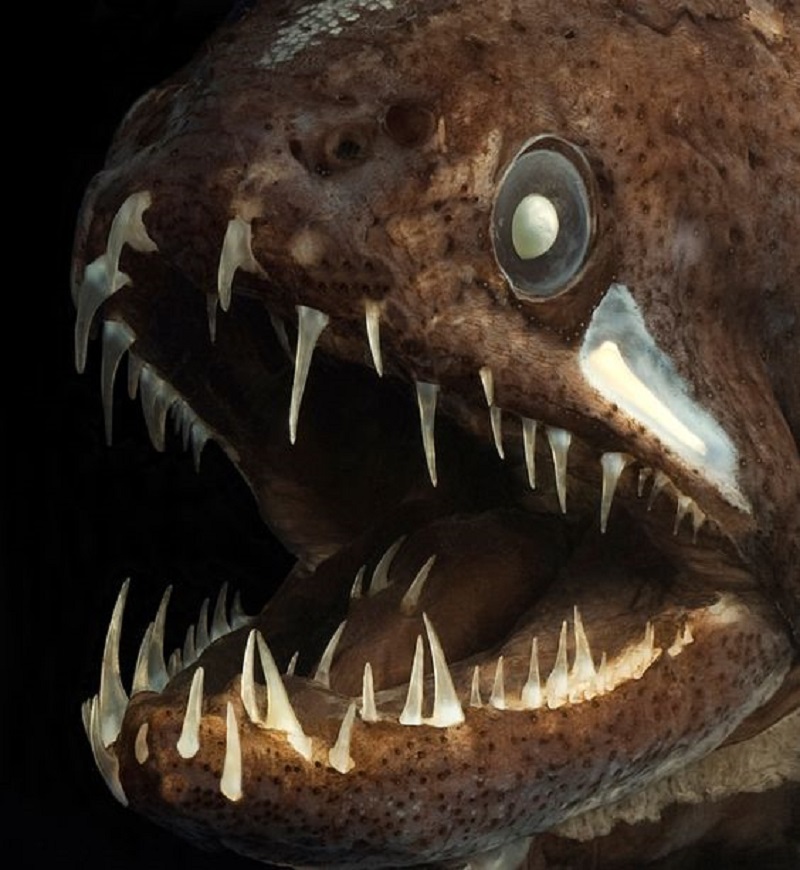
15. Stareater
Scientific name: Astronesthes.
This aggressive-looking fish has recently been found in the waters between Australia and New Zealand. Like many other deep-sea predators, it has a bioluminescent red chin barbel that is used as a lure to attract small prey.
Bonus creepy fact: An alternative name for the stareater is snaggletooth, which most likely refers to its sharp, needle-like teeth used to catch prey.
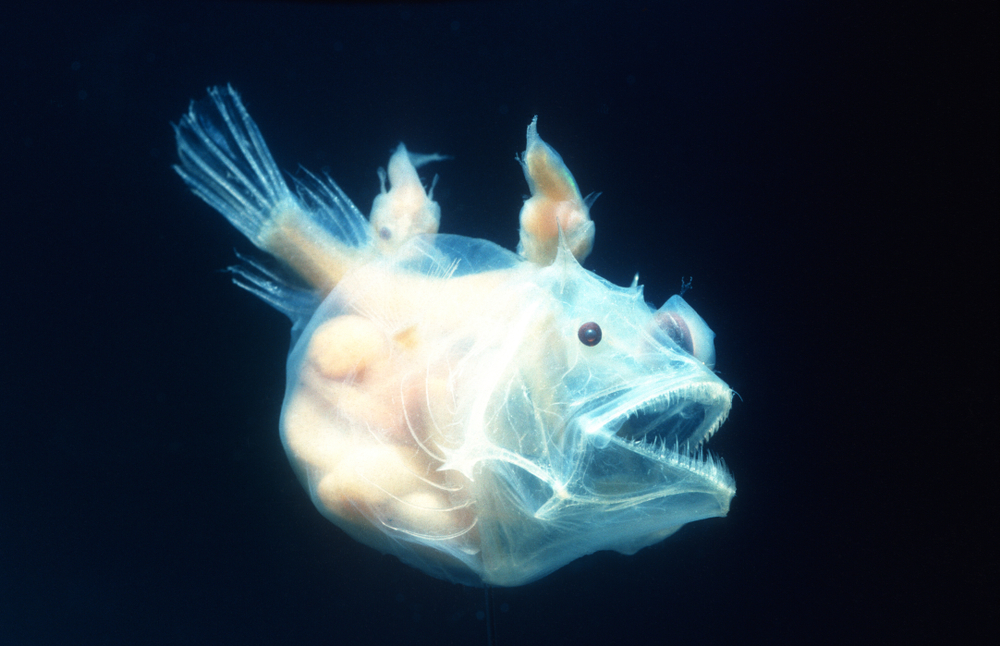
16. Anglerfish
Scientific name: Lophiiformes.
Just as in Finding Nemo, deep-sea fish varieties have nightmarish mouths full of long, fanged teeth. Their distinctive model of predation is that they use the fleshy growth of their head as a fishing attraction, waving it back and forth to attract prey.
Bonus creepy fact: the jaws and bodies of anglerfish are highly flexible, which means they can swallow prey up to twice their own size.
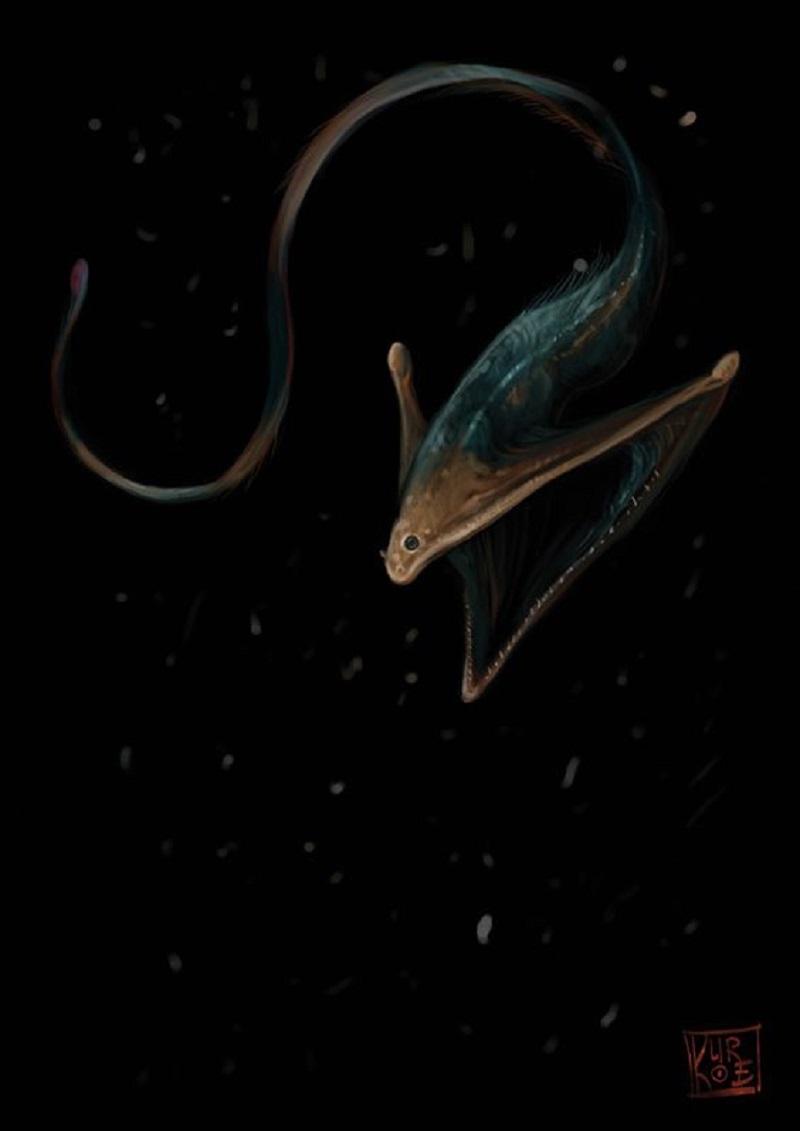
17. Gulper eel
Scientific name: Eurypharynx pelecanoides.
Covered in black, velvety skin, this eel-like creature lives 3,000 meters below the surface in the depths of the ocean. Most visible is the massive, pouch-like mouth of the gulper, which can be opened wide enough to swallow a fish much larger than itself.
Bonus creepy fact: not shown is the very long, whip-like tail of the gulper eel, which contains multiple tentacles that shine pink and give off occasional bright red flashes.
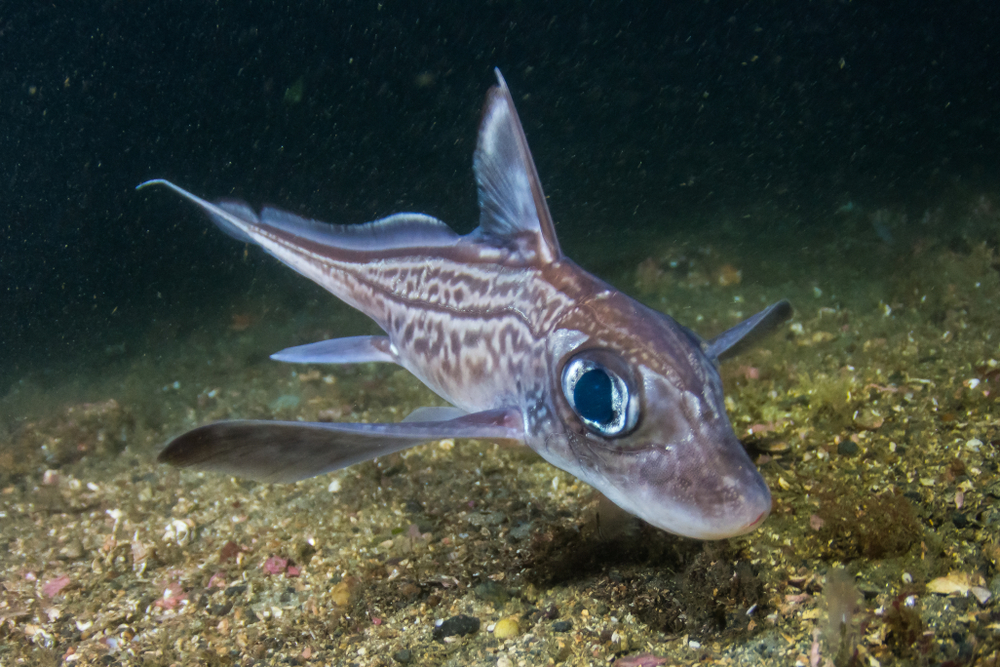
18. Chimaera
Scientific name: Chimaeriformes.
The mysterious ocean floor dweller is usually referred to as a ghost shark. Not much is known about these chimaeras, who have only recently been filmed for the first time in their natural habitat.
Bonus creepy fact: the strange, stitch-like lines you see on the chimaeras are actually sensory organs that identify movements and vibrations in the water.
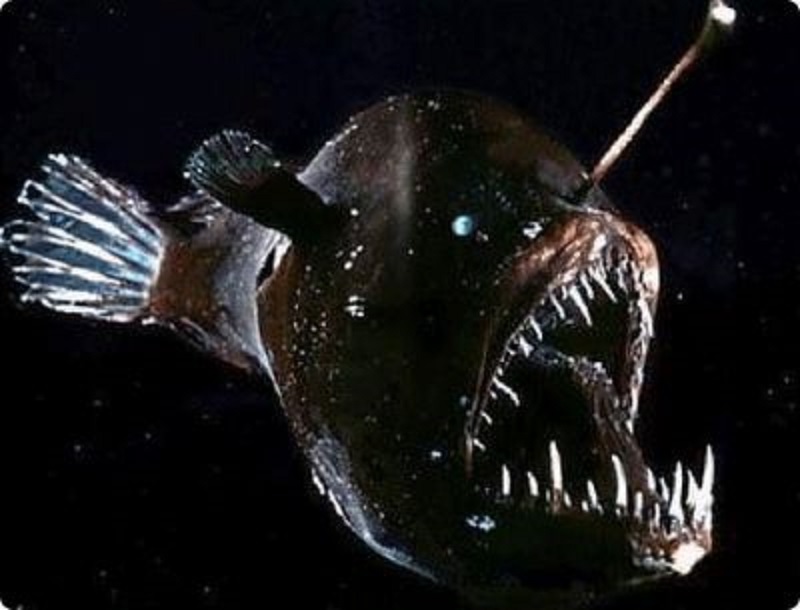
19. The black swallower
Scientific name: Chiasmodon niger.
Even hearing the name of this deep-sea creature would be enough to make anyone shake. Even though it is a slender-looking monster, the black swallower has an enormous, expandable stomach capable of swallowing more than twice its size and 10 times its mass.
Bonus creepy fact: occasionally the black swallower bites more than he can chew, which means that his food may begin to decompose in his stomach before it can be digested. The resulting gases produced by the decomposing body force the black swallower to the surface where it cannot survive.
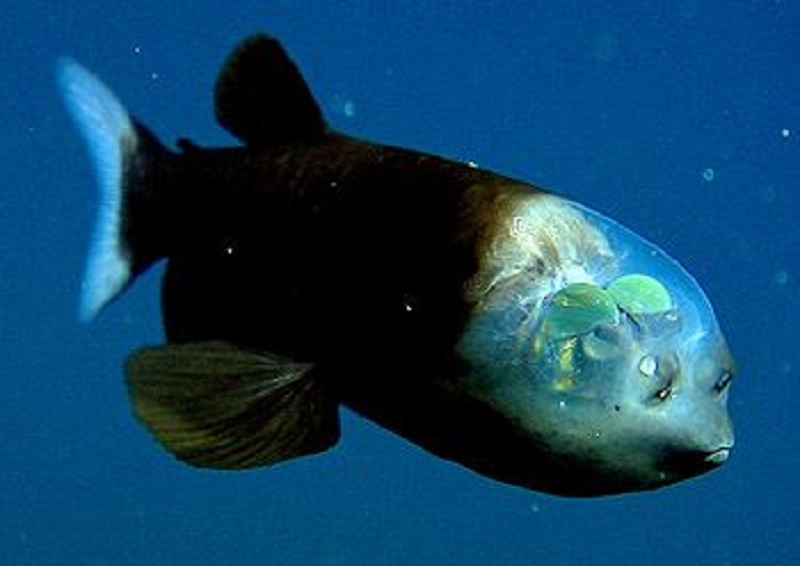
20. Barreleye
Scientific name: Opisthoproctidae.
This futuristic-looking fish is named for its barrel-shaped, tubular eyes, which are directed upward to identify prey. The eyes are enclosed in a big, transparent soft tissue dome. Yes, and those dim shadows at the front of the barreleye are actually not its eyes. Look up a little more, and you’re going to find them.
Bonus creepy fact: these deep-sea animals have been known to scientists since 1939, but it was only photographed alive in 2004.
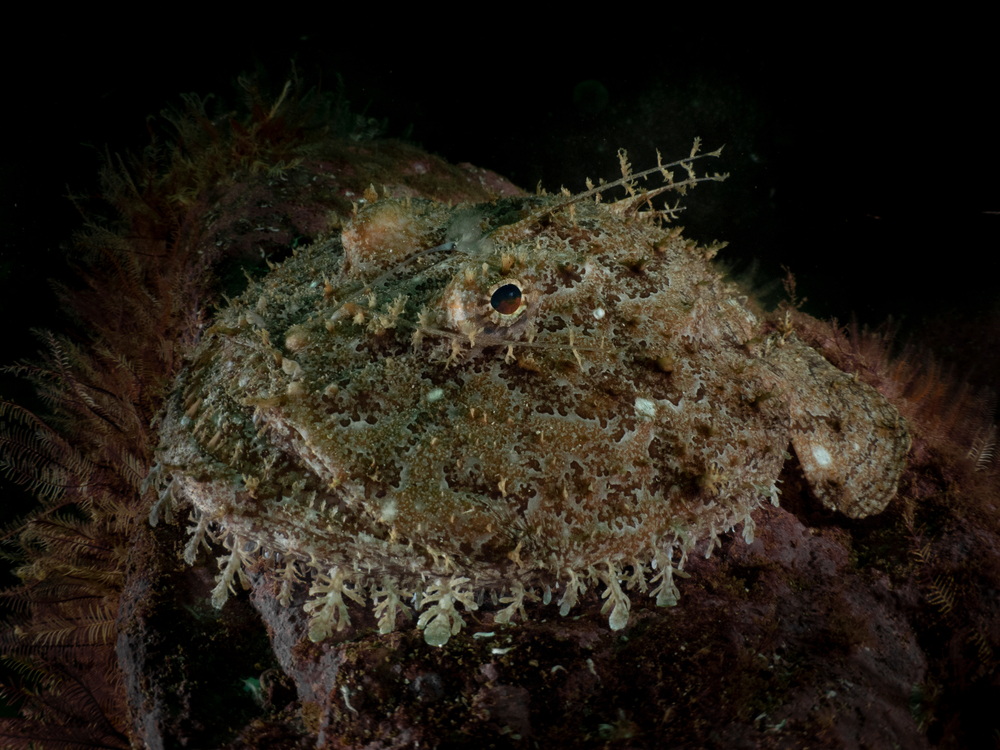
21. Monkfish
Scientific name: Lophius.
Theoretically, monkfish is not strictly a deep-sea fish, but various species have been found at a depth of 1,000 meters. Their wide, flat mouths are armed with bands of long, pointed teeth that enable them, in combination with their extremely large stomach, to swallow prey that is as large as themselves.
Bonus creepy fact: the monkfish has a bulb of flesh attached to their heads, which is intended to act as a bait to attract smaller fish.












































